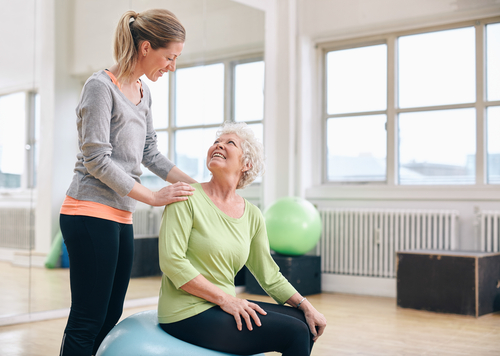
Health News
Massage therapy promotes health, improve quality of life for aging adults: study
 A growing population of aging adults is getting massage therapy as part of their integrated care to temper aches and pains, tackle chronic pain and aid in long-term care. Studies continue to show that aging and elderly individuals benefit greatly from massage therapy, according to the American Massage Therapy Association (AMTA).
A growing population of aging adults is getting massage therapy as part of their integrated care to temper aches and pains, tackle chronic pain and aid in long-term care. Studies continue to show that aging and elderly individuals benefit greatly from massage therapy, according to the American Massage Therapy Association (AMTA).
February 6, 2015 By PR Newswire
Regularly receiving massage has been shown to promote relaxation and
stability while helping temper the effects of dementia, high-blood
pressure and osteoarthritis. By incorporating massage into a regular
health-care regimen, many older adults find a better quality of life and
additional relief from a multitude of health issues.
“The aging of both the silent and boomer generations call for an
increased focus on improving and prolonging quality of life in this
population,” said Nancy M. Porambo, president of the AMTA. “While
integrating massage therapy into a health and wellness plan is useful
for all ages, it holds particular value in the growing elder
population.”
The oldest part of the population is the most rapidly increasing segment
of the North American public. In 2011, an estimated five million
Canadians were 65 years of age or older. The trend is expected to
continue for the next several decades due mainly to a below replacement
fertility rate (i.e. average number of children per woman), an increase
in life expectancy, and the aging of the baby boom generation. By 2051,
about one in four Canadians is expected to be aged 65 or over, according
to Human Resources and Skills Development Canada.
Similarly, the population of U.S. citizens over age 65 is projected to
increase from 12.9 per cent to 19.6 per cent by 2030, according to the
National Center for Health Statistics. By 2040, a projected 28 million
Americans will be 80 or above, more than three times the population of
the bracket in 2000.
The 18th Annual American Massage Therapy Association Consumer Survey,
conducted in July 2014, found that approximately nine million people
over the age of 55 had a total of 39 million massages in the previous 12
months. The report found that the primary reason this population
received massage was for medical purposes – pain relief,
soreness/stiffness and recovery from injury.
Chronic pain is generally underreported in the elderly population due to
a fear of stigma and assumption that it is an unavoidable part of
aging. This highly treatable issue is not being seen as a health
ailment, though it has been shown to severely impact lifestyle through
disruption of sleep, daily routines and social activities.
Incorporation of massage therapy into care routines has been
demonstrated to help treat chronic pain, particularly in joints, such as
the shoulder or knee, while also improving stability and posture, the
AMTA said.
"[This study] suggests that regular massage may produce physiological
changes that contribute to improved balance and postural control," said
Jo Ellen Sefton, director of the Neuromechanics Research Laboratory at
Auburn University. "This may be a way to decrease falls in older
adults."
With 1.5 million patients in over 16,000 eldercare residences, the
benefits of massage therapy are increasingly apparent for these senior
citizens. Studies have shown that even a brief massage can reduce
agitation behavior in older adults living with dementia, such as
physical expressions of pacing and wandering.
Research also shows that massage therapy provides clinical benefits to
hospice patients, such as decreased pain and improved quality of life.
For example, a recent national cross-sectional survey of a random sample
of hospices showed that 29 perc ent of facilities reported employing an
art, massage or music therapist, with 74 per cent of them employing
massage therapists.
Print this page